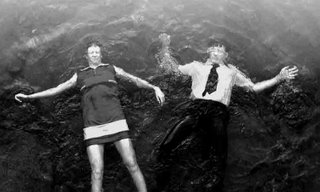OPEN CALL
Deadline: August 3, 2006
Digital06: Bio/Med SciART
International Digital Print Competition/Exhibition in NYC
Art & Science Collaborations, Inc (ASCI) is pleased to announce the Open
Call for its 8th annual, international digital print competition/exhibition,
"Bio/Med SciART," to be held at the New York Hall of Science from September
30, 2006 - January 15, 2007. The aim of this exhibition is to explore how
the health, medical, biosciences [including biology in general and also
neuroscience] and biotechnologies are influencing the content of
contemporary art via digital prints.
JURORS: This year's competition selections will be made in an art-science
collaborative process between ASCI Director, Cynthia Pannucci, and Ramunas
Kondratas, Curator of the medical collections in the Division of Medicine
and Science at the Smithsonian Institution's National Museum of American
History.
Entry Details: http://www.asci.org/artikel795.html
------------------------------------------------------------------
Cynthia Pannucci
Founder/Director
Art & Science Collaborations, Inc. (ASCI)
www.asci.org




